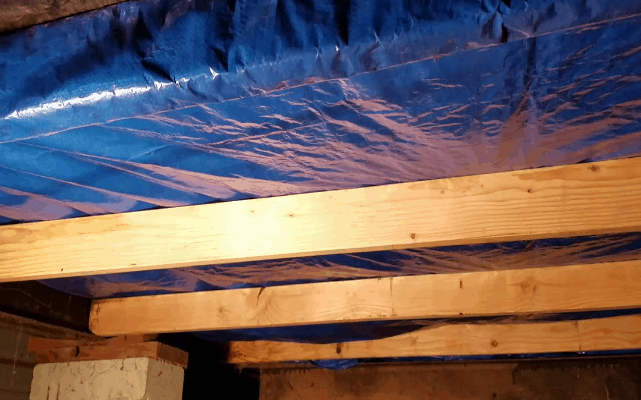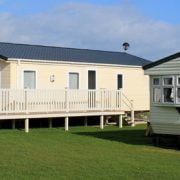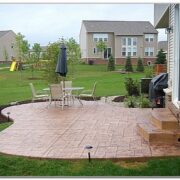If you have been to a manufactured home, you will probably see it’s smelly, and the insulation is hanging no matter how much the house is neat, clean, and organized. Most of the manufacturers call this sheet “Belly Wrap” or “Bottom Board.”
A mobile home is already a fabricated structure built on a steel chassis. It’s a large caravan people use for permanent or semi-permanent events. The origin of these homes dates back to a historic origin where travelers from around the world needed to settle down. The bottom board keeps out water and rodents. It is the home’s main line of defense against the dangers of foundation moisture to the residence.
How does the Bottom Board get damaged?
A mobile home is very cheap accommodation, so after a few years, you will see the bottom getting shredded like cheese. Moreover, the gets inflated due to insulation. However, you might ask: why does the bottom board gets damaged?
One of the most common reasons is plumbing leaks – the rush of water at such a speed that the board eventually gets damaged. The bottom board attracts water at the lowest point, and then it starts developing dampness, which eventually leads to a hole formation in the mobile home. After a period of time, the belly wrap is compiled with leaks and holes.
Premium mobile homes have a structure extended underneath the bottom board as a support, which deters the rows from getting shagged up in a brief period.
How to repair the bottom board?
Damages ought to happen in the mobile home as they are not made up of very premium or costly materials, but one thing good is that you can mend the loss. Here’s how:
1. Patch any gaps in the bottom wrap to renovate the surface of the home.
An excellent way to facilitate closing the gap after the repair is to begin by scraping an X-shape. Four shreddings will be hanging down during the restoration that can be taped when the work is done. Both mechanical fastening and a flexible adhesive can be used to secure the repair area.
2. Another easy technique is to induct a lightweight sheathing sheet within the bottom board opening above the hole.
You can staple or nail the holed area with the sheet and apply tape to cover the extent of the damage. This way, it can be sealed for a long time and stay secure.
How can you inspect a belly wraps for damages?
Well, you can take a flashlight in your hand and crawl like an insect beneath the surface. If you see any bulging structure evolving from the bottom, some water is caught up due to leakage, maybe a plumbing leak. If you can see insulation or inflation, then repair it. You might also find dampness in the bottom. Usually, people put duct tape, but these tapes can only last for a few days; later on, the damage will increase.
A bottom wrap is the most vulnerable thing for a mobile home, and once if the foundation is shaken, it is impossible to hold the building; the same happens with a belly wrap. Once you buy this manufactured home, you need to be very careful of the underside because once damaged; it will take a lot of time to repair and heal.
Although bottom boards are prevention against insects and rodents, if you do not inspect the bottom regularly, holes and shreds created by plumbing leakage might be a happy residence for the insects. They will make their home in the holes and bulged out structures, and later on, it will cause pain to remove them from their home.
Suppose you have a water-related problem in your mobile home, then call the plumber immediately tell them to mend the issue. But don’t let them use duct tape rather encourage them to use valuable adhesives that will last for days.
When the plumber is done, crawl beneath the bottom wrap with the torch again to check for the leakages. If there are any, make plans to renovate.
How to take care of the sheet under your mobile home?
The black base of the mobile home that is the bottom board or blackboard is the foundation for this manufactured home. The material used for the bottom board is Asphalt fiberboard or polyethylene and heavy tar paper. The board’s purpose is to prevent moisture, and all boards live up to their name.
A piece of advice: Keep polyethylene sheets handy because of the common damage caused in the board that needs excellent and long-lasting repair. Polyethene is a thin, durable material used in the industry.
It is essential to clean the bottom board often; while you are into repairing, make sure you clean it. Cut a larger piece of the sheathing sheets to mend the holes, secure it with a flex-mend tape.
Almost all the bottom boards are constructed upside down and the floor is hammered with nails. Then the duct water lines are attached, and the entire floor is insulated. Then comes the bottom board that is the first defense line attached to the steel chassis.
You can cover a mobile home floor with a carpet; you can choose any rug you want. Before repairing the damage caused in the bottom board, make sure to find out what has caused the harm. In that way, you can reach the root of the cause and eradicate it, if not forever, then maybe for the time being. Suppose moisture caused the damage. You can fix the leaking happening in whichever part of your home. Or, if the pests caused the damage, remove their existence from your bottom board and make it secure and safe.
The mobile home is one of the most accessible and affordable accommodations one can easily avail of. Although in some parts of the globe, it is required to move from time to time because of legal reasons.
These homes come in two different variations, one is a mobile home hassle wides and the second is a mobile home with double wides. Triple wide homes are also built but not that frequently, they are made according to customer’s demands.
Single wide homes require frequent maintenance and can be easily traded if a person wants to buy or move into a new house. It is also true that mobile homes are structurally weak; a tornado can wipe off the existence of the home within a snap.
Keep a few things handy, and you are good to go
1. Polyethylene – A polyethylene roll is a must, so any time even slight damage happens, you can salve it like an ointment.
2. Furring strips- Cut them in a rectangular shape and keep them on you all the time.
3. Flex mend tape- The Flex-Mend tape has a concrete coating adhesive specifically formulated for this task. It also has a simple paper release liner to make permanent repairs. Once you apply tape, use a blow dryer to heat the tape for better adhesion.
If most mobile home bottom wraps and insulation are intact and undamaged and a thorough inspection does not show signs of leakage, then it would make sense to buy a patching tape or patch kit to repair the existing bottom board wrap.
Typically the material used to make manufactured homes is several polyethylene layers, insulating fiberglass, or other material sealed in the center ply. The bottom board insulation material is enclosed in plastic for waterproofing and is usually sold in rolls.
When you move a factory-built home to a location, its permanency decreases its mobility. The effect is so vast that some states tax mobile homes as personal property if the wheels remain attached. However, if you remove the wheels, they consider it real estate. Axel removal may also be a requirement for real estate classification.
This is how mobile homes came to play. People who couldn’t afford traditional houses, or did not desire to commit a large sum of money on them, began to see factory-built homes as viable alternatives. Unsurprisingly, the units were often marketed as an alternative to apartment rental.
Conclusion
Bottom boards, removable boards inside a home, or board at the bottom is used to protect the outer planking. Older, developed homes can be an excellent investment or a reasonably priced place to call home. If you take care of these homes, they can appreciate with time. Like is the case with a site-built home, a manufactured home can deteriorate over time if left to the elements or faulty maintenance.







Bought a doublewide. It is on a 10foot high foundation with concrete floors and piers.. Can I the belly wrap be removed in order to finish the basement area?
I bought a mobile home and the previous occupants apparently cut and removed the insulation under the large jacuzzi style bathtub! I guess to fix the tub I think. I’m still kicking myself for not doing an inspection myself. I’m pretty much unable to crawl like a friggin insect due to 4 back surgeries. I’m in Paragould Arkansas about 6 miles from Jonesboro Arkansas. Could you tell me who and what I need to do? Btw I really enjoyed reading about mobile homes underneath on the site! Thank you again It gave me a laugh but now I’m hoping I’m not screwed glued and tattooed money wise.
I wrapped the out side bottom of my trailer with plastic. Some of the sheets of wood was broken. Now I have moisture on the inside of plastic. What should I do. Just trying to save on engery. I live in a very cold state. I didn’t cut out the vent holes yet, do you think that will help?